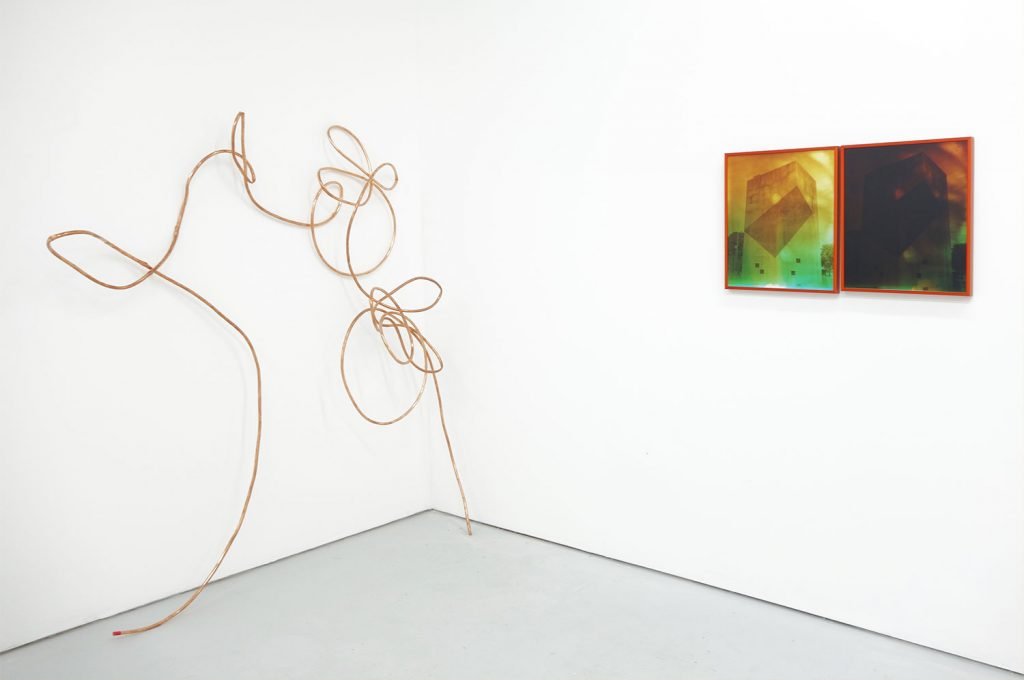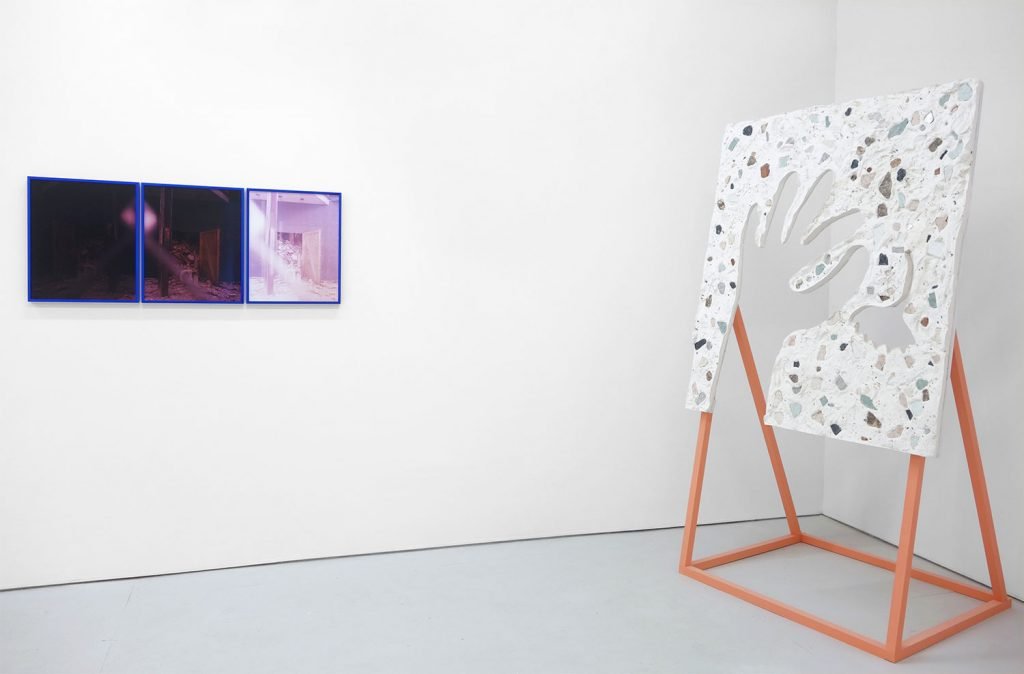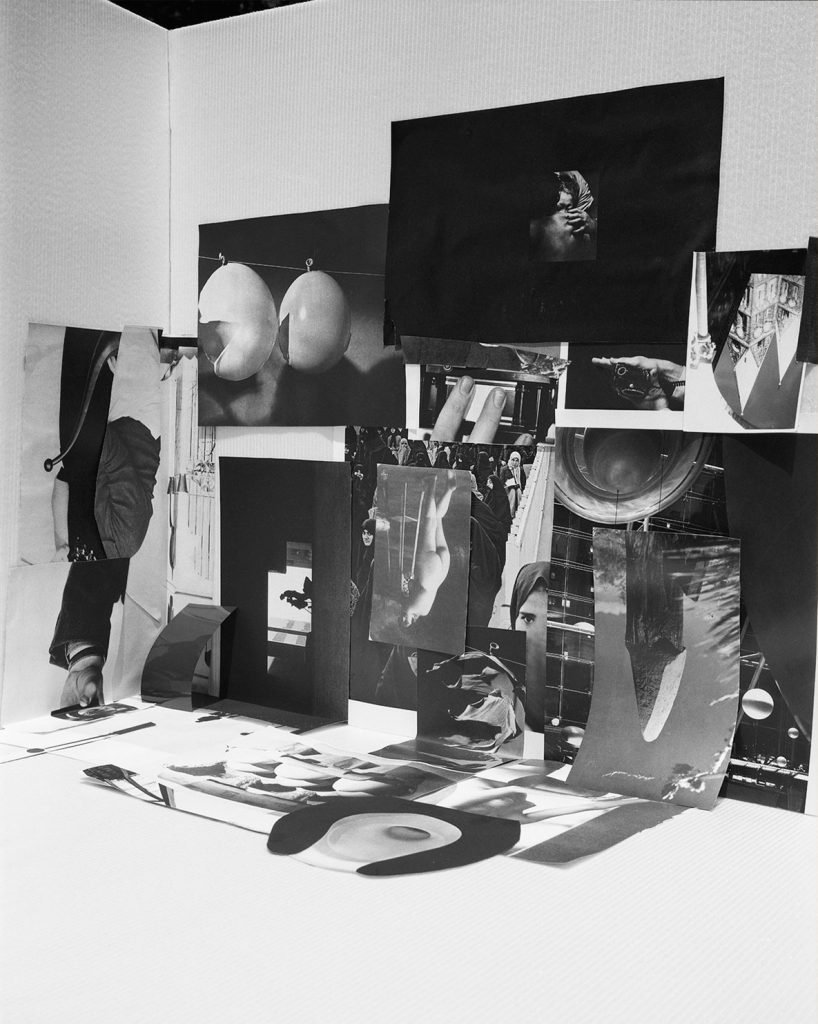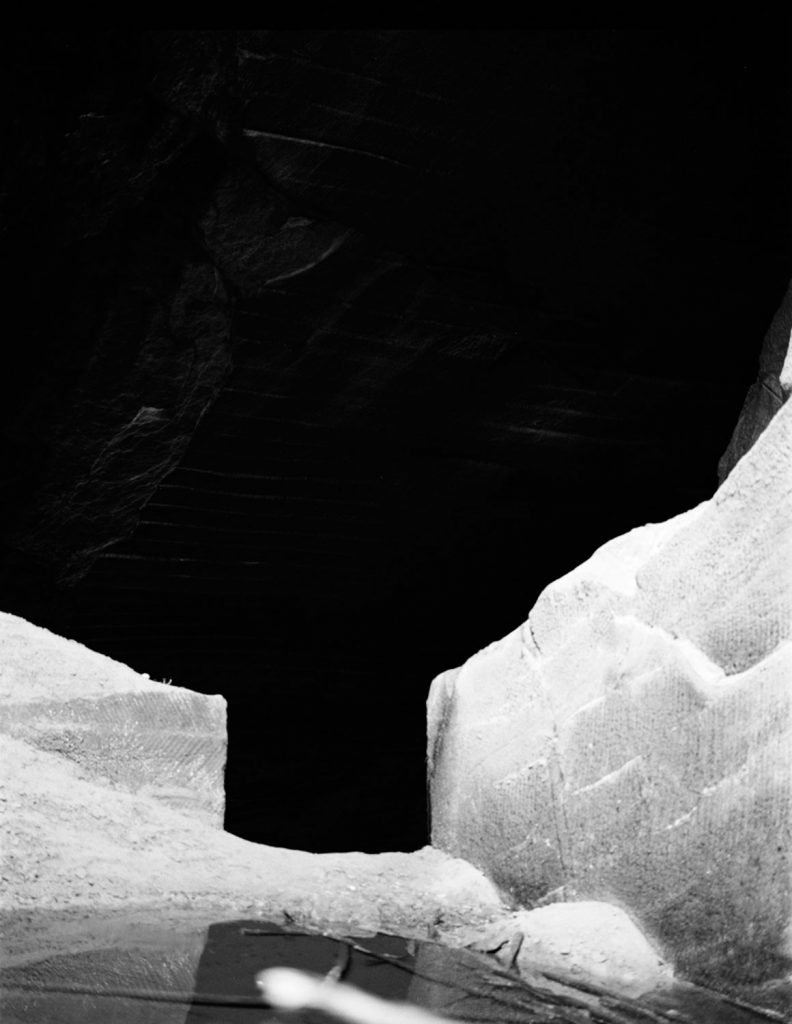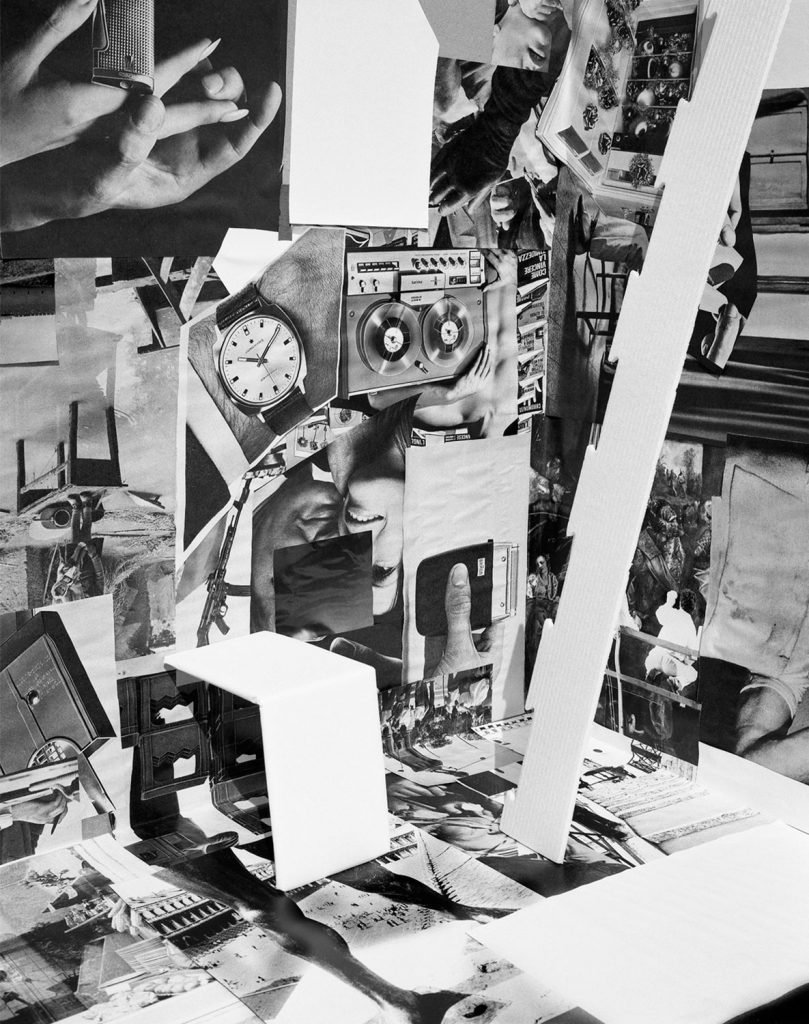Ginevra Shay is an artist and curator currently based in Baltimore, Maryland. Ginevra’s photography and studio practice are in many ways inextricable from her site-specific curatorial work; they reflect one another through their investment in fostering an openness of exchange and dismantling passive engagement. Ginevra uses photography and sculpture to depict poetic moments of observation and adaptation.
Ginevra is a 2018 Maryland Individual Artist Award Recipient for Photography. Her recent two-person exhibition “A Big Toe Touches A Green Tomato“, with Roxana Azar at Resort, was featured online in Artforum and ARTnews.
She has lectured and participated in panels at the Queens Museum, the Oakland Museum, American Philosophical Society in Philadelphia, College Art Associate’s National Conference, and the Society For Photographic Education National Conference.
Ginevra was invited to participate in Yale University Art Gallery’s 2017 intensive on photo book publishing and was selected to be part of the inaugural 2018 Ardesia Projects photography residency in Daverio, Italy.
Her work and publications are in the libraries of Yale University Art Gallery Library, The International Center for Photography, Indie Photobook Library, Houston Center for Photography, and the Los Angeles County Museum of Art.
Christian Michael Filardo: I feel as though you’re very physically involved with your work. Your awareness to your environment, the way you source materials, your presence in your process. Do you ever think about your work as “performative”? Is there a formula to your making?
Ginevra Shay: I don’t know that I necessarily have a formula. I try to conceive of work at the edge of my understanding—the edge of what I feel I’m capable of.
I often think about performativity in the Judith Butler, José Muñoz, and Derrida sense; the body’s relationship to language and space. I also look to movement-based work and durational performance to help me better understand and interpret these relationships outside of my personal experience. I’ve recently been thinking about the work of Yvonne Rainer, Mierle Laderman-Ukeles, Gordon Hall, and EJ Hill. Rainer’s ability to highlight everyday movement through modern dance, and Laderman-Ukeles’ life-long collaboration with the NYC Sanitation Department to show the gesture and poetics of garbage removal, have been influential to my philosophy of art-making.
For the past few years I’ve been concerned with the weight and effect of architecture, built environments, natural environments, and images on my body. I’m finding and creating a sense of the overlaps between these things. I’m taking very specific personal experiences and emotions that I have in a place and translating them into abstract forms. The physical action used in the process is often important to the concept, for example: Tomato Plant (dedicated to Roxana Azar) took eight hours to bend copper tubing over my body into the form of a winding reachy tomato plant. Its height and width, the size and shape of the tomatoes, were determined by the limitations of what my body could fit in and hold—and also the limitation of what the materials could handle before breaking and crumbling.
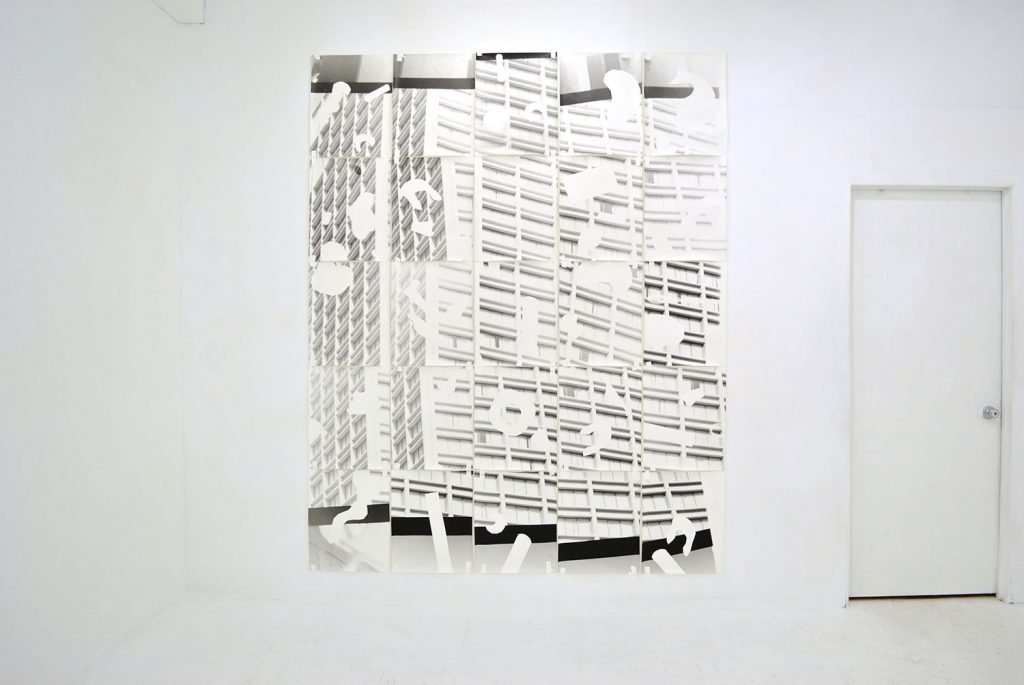
My mural size silver gelatin photograph “Cut, put, place, hold. Move to the side. Wait. Hold Still. Cut. Replace. Tape. Hold. Lights On. Lights off. Wait.” made up of multiple distorted images of a ubiquitous hotel building, was an effort to create a self-portrait that wasn’t directly representational of my body but of the actions required of it in the darkroom. In this work I’m pointing to the predictability and structural limitations of a building, and of a self-portrait—I’m calling these things into question and trying to restructure them.
This leads me back to translating experiences and emotions into shapes and images instead of words. Usually my work starts there then moves to explore broader questions: can I turn the concept of “monumentality” into something that feels celebratory, sincere, and playful, rather than commemorating patriarchal language and valorizing war? Is it possible to make a heavy sculpture feel light? In Hand Dropping Gingko Leaf (a sculpture made out of plaster and stone) I work with ubiquitous building materials to reference the human body, a gesture, and a plant, as well as typical uses of these materials. In doing so I was able to address the function and complexities of monumentality, pointing to the facets we need to let go of. For me, the more fragile and ineffable acts in life are the ones that should be commemorated in stone.
CMF: Can you talk about humor and play in your work? It seems important to some of your work that it strikes a balance between seriousness and levity.
GS: I’m really glad you mentioned that. While a lot of my work can feel very dark and dense, there’s also humor and play in most of it, particularly my recent sculptures, color darkroom photos, and the Raum Bilder series.
Agnès Varda’s dark sense of humor has been important to my work. The precision in her abrupt stylistic changes, shift in tone, the way she handles the camera—it all floors me. Varda has this way of constantly shifting points of view between numerous fictions and what appears to be “reality.” None of these lastingly takes priority, which I find really effective. I look to her work because she is so eloquently able to weave all of these totally subjective threads into something that is still connected to our experience in the world.
My recent handling of color is also in direct dialogue with Varda. Her color transitions in Le Bonheur (1965) are much more vibrant than anything else in the film, punctuating the narrative with an uneasy sense of levity. She contrasts a playful high saturation palette with a tumultuous emotional narrative—which sets up a number of complicated interpretations of the film. In a connected way, I’m taking black and white negatives into the color darkroom and selecting the colors individually as colorcast overlays. This affects the handling of color, bends it, as a way to deepen the diegesis in the work—to show that even a still image can have multiple layers of meaning and tone.
Director Jacques Tati is another major influence on my work. His stunning comedic films address the struggles within an ever-globalizing world; a world that often favors consumerism and materialism over humans. I have a tendency to make dense and maze-like visual worlds which are collapsing on themselves even while being built up, and I think this is very Tati-like—I mean, he fabricated a 3/4 scale, extra grey Paris to film Playtime. I appreciate his comedy’s way of constructing a rich landscape full of levity while simultaneously creating precise, direct, and emotive forms.
I feel as though there are many parallels between me and Tati’s Monsieur Hulot. My style and processes are a little old-fashioned, and I’m bumbling through life doing weird things. Spending eight hours to bend copper pipe into the shape of a reachy tomato plant—it’s totally absurd, like the Hulot gag of trying to stop the plastic machine in his new factory job in Mon Oncle. Both of these acts could be considered attempts to stop life’s inevitable ennui.
In looking to an earlier generation of filmmakers use of visual comedy, the jokes that I find most effective rely on what is immediately available as a comedic prop—taking completely normal, boring, everyday things and finding a joke within them. This comedic device is something I think of in making my work—imbuing lightness into otherwise heavy topics and materials. So much humor is rooted in observation—space, timing, reversing expectations—to me, it’s an austere idea of humor, this “let see what you can do with what you have”, is what I’m most fond of. It’s a very straightforward and direct example of taking a more full consideration of the world around you.
Comedy and play become a form of ethics, or a mode of survival.
CMF: Does sound play a big role in your work? I feel like a lot of the work in Raum Bilder has interesting movement that I often associate with audio or musical composition. A certain quality or familiarity that taps into a persons’ memory. I feel like this is what you’re alluding to with your material choice. It’s nice to think of these domestic or everyday objects becoming transformative and existing as a new environment.
GS: I like that read. I think of everything spatially. More so than music, the structure and cadence of poetry are what’s influential to my work.
I’m creating a cadence to articulate an otherwise difficult to describe sensation of contemporary life—a poetic interpretation of image saturation. I’m interested in this idea that as humans, we try to make sense of a chaotic world through grouping and pattern finding. I deconstruct and then reconfigure photographs within dioramas. Focusing on pause and cadence, and wanting to direct the rhythm of images, in a world where they are so monitored and controlled. The most recent Raum Bilders that I made while I was in Italy directly address the effects of mass image production and consumption on identity. How people’s relationship to and understanding of desire and attraction are often constructed through targeted marketing, and emotions like feelings of chaos, inclusion, joy, and pain are also wrapped up in image saturation. I’m interested in how American society utilizes the proliferation of images in print and media as a means of distraction within a dystopian late-capitalist landscape. I’m making images into a minor language. For me poetics here are about breaking and building—this work is an act of poetic reconfiguration.
CMF: You were recently an artist-in-residence in Italy for the In-Between Shores residency organized by Ardesia, what was that like?
GS: The residency was incredible. I spent three weeks in Daverio, a small town in northern Italy, creating a new body of work. I was alongside four brilliant photographers selected from across Europe and the UK; Roisin White (IR), Sybren Vanoverberghe (BE), Piergiorgio Sorgetti (IT), and Fiona Filipidis (GBR/FR)—we ate well, swam everyday, woke up early and stayed up late drinking and talking every night. I miss them dearly, their names are all tattooed on my heart.
Ardesia is a curatorial effort and platform organized by Bennedetta Casagrande, Michele Amaglio, and Dimitri D’ippolito—three young Italian photographers who are making huge strides in connecting the Italian photography scene with the rest of Europe. They’re thoughtful and hilarious, there is so much care and attention to detail in everything they do.
Along with the residency, Ardesia organized an artist talk in Daverio, two exhibitions—one in Daverio and one in collaboration with Tomasso Parrillo at JEST gallery in Turin—and workshops with artists Sara Palmieri and Alessandro Calabrese. Incredible right? Someone give Ardesia a million euros.
CMF: What do you have coming up?
GS: Opening in September I’m in ROTTURA DI SUPERFICIE an exhibition at B#S Gallery in Treviso curated by Michele Amaglio, with Nicola Novello, Linda Alborghetti & Marco Bellini. This fall I’m the artist-in-residence at Full Circle in Baltimore. I’ve been invited to make a new body of color darkroom work which I’ll be presenting in a solo exhibition there in November.
CMF: What are a few things that make you happy in your everyday life?
GS: The sound of the Moka percolating, touching my plants, catching a sunspot or shadow doing somethin’, feeling the wind on my face as I walk home, the sound of my friend’s voices, Ryan.
–
website: Ginevra Shay
Instagram: ginevrashay
–
copyright © Ginevra Shay and PHROOM, all rights reserved
–

